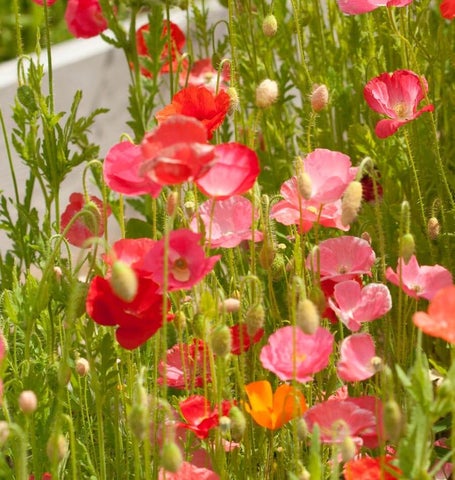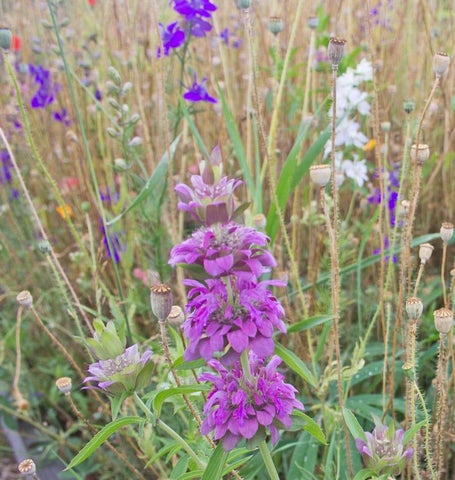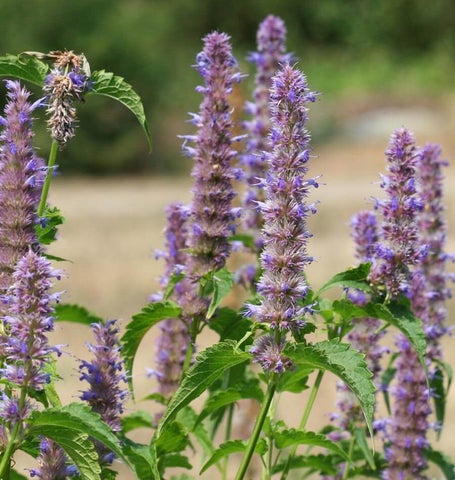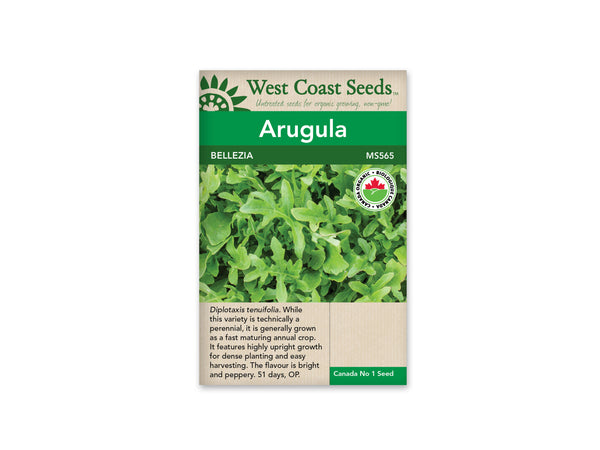Canadian Orders: Flat-Rate Shipping on Orders over $75 | Orders Over $150 Ship Free!
-
Shop
- New Arrivals
- Gardening
- Seeds
- Children + Baby
- Bath + Skin Care
- Baby Toys
- Books
- Puzzles + Games
- Loose Parts + Creative Play
- The Little Naturalist
- Play Chef
- Slings
- Apothecary
- Kids Lunches
- Accessories
- Sustainable Living
- Brushes / Brooms
- Food Storage
- Outdoors
- Coffee, Tea, Chocolate + Honey
- Coffee + Tea Accessories
- Water bottles + Travel Mugs
- Cookbooks
- Dishwashing
- Laundry
- Cleaners
- Accessories
- On The Go Essentials
- Self Care
- Face Care
- Body Care
- Hair Care
- Cosmetics
- Deodorant
- Toothpaste + Oral Care
- Sun Care
- Accessories
- Zero Waste Bathroom
- Soap
- Essential Oils
- For Men
- Books
- Apothecary + Natural Supplements
- Pet Care
- Shop Local
- Bulk
- In Store Pick Up
- Home Improvement
- Paint & Stain
- Discover
- Bulk Bar
Wildflowers — Deer Resistant Blend
Sold Out $4.99
A blend of wildflowers that are not preferred food sources for deer or are resilient to being foraged. In times of weak grazing, deer may still nibble on these plants, but the contents of Deer Resistant wildflower seeds were chosen for their resilience to deer. Great for planting on the Gulf Islands and BC Interior, where deer can be a real nuisance. The mix will also work in any other North American setting, attracting pollinators like bees and butterflies, but foiling marauding deer.
The wildflower seeds in the Deer Resistant Blend were selected because, in most years of good forage, deer will wander past rather than graze on them. Many of these plants have texture, aroma, or flavour that is not palatable to deer – and other grazing mammals. If you’ve ever tried gardening in an area where deer pass through, you’ll know how frustrating it can be. Fences and deer repellants do work, but in gardens where these are not practical, just plant flowers they don’t like to eat, and enjoy the colour. This blend is also attractive to butterflies, hummingbirds, and wild bees.
| Blue Sage | Salvia farinacea |
| California Poppy | Eschscholzia californica |
| Corn Poppy | Papaver rhoeas |
| Four O'Clock | Mirabilis jalapa |
| French Marigold | Tagetes patula |
| Giant Purple Hyssop | Agastache rugosa |
| Gold Yarrow | Achillea filipendulina |
| Lemon Bergamot | Monarda citriodora |
| Perennial Lupin | Lupinus perennis |
| Rocket Larkspur | Delphinium consolida |
| Sweet Alyssum | Lobularia maritima |
| Sweet William Pinks | Dianthus barbatus |
| Wild Bergamot | Monarda fistulosa |
Quick Facts:
- Perennials, annuals and biennials
- Resilient to deer
- Mix of colours
- Easy to grow
Size: 5g (covers approx. 43 sq ft)
How To Grow: Unless otherwise stated, all the wildflower mixes will contain perennials, annuals, and biennials. Seeds must come into contact with the soil in order to germinate. Do not bury seeds more than 2-3 times their thickness. Continue reading below for some other tips on how to grow wildflowers from seed.
Difficulty
Easy
Season & Zone
Exposure: Full sun to partial shade
Zone: Zone 4.
Try to direct sow wildflower seeds during the period two weeks before, and eight weeks after, your last average frost date. Sowing when there is some risk of minor frost may improve germination. Wildflower seeds can also be sown in the autumn, but a certain percentage of seeds to may be lost to water, birds, and animals. To make the most of the annual species, direct sow in early spring.
Starting
Site Selection: If there are already no plants (including weeds) growing in the planting site, there may be a problem with the soil. Possible issues may be soil fertility, lack of drainage, or the need for soil amendments to improve texture. In such spots (eg, beneath a cedar tree), few plants will thrive, including wildflowers.
Site Preparation: Remove as much existing vegetation as possible through pulling or tilling under in order to minimize competition. Loosen the soil by scraping, raking, or tilling. Wildflower blends will not usually take if planted into existing lawn because the thatch prevents their contact with soil.
Seed Application: In small areas, seeds can be scattered by hand. In larger areas, you may want to employ a lawn spreader or some other mechanical means. We recommend adding 1-2 parts clean, dry sand to 1 part wildflower seeds which will help the seeds spread evenly. Do not use beach sand, as it usually contains salt. It may be wise to spread most of the seed, but to save some for filling in bald spots at a later date. Seeds must come into contact with the soil in order to germinate. Do not bury seeds more than 2-3 times their thickness.
Planting rates: Aim for a planting density of 70 seeds per square foot. 5g of seeds will cover 43ft². If seeding an area where site preparation and weeding are not possible, double this rate.
Growing
Keep the seeded area as evenly moist as possible to help the seeds germinate and the young seedlings become established. Weeds need to be kept under control. Once they are growing, most mixes will not require additional water except in long periods of hot, dry weather. All of our mixes should re-grow for several years, but will eventually benefit from re-seeding. In late summer, many of the components will produce seed heads that can be harvested and replanted the following spring.
Related Items
Agastache — Licorice Mint
Sold Out $3.49
Agastache foeniculum. With heavily licorice-scented leaves and tall spikes of edible lavender flowers, Licorice Mint has been used medicinally for generations. It also happens to...
View full product detailsArugula — Astro Organic
Sold Out $3.99
CERTIFIED ORGANIC! Astro organic arugula seeds produce a plant with leaves that are less lobed and more strap-like. It has a milder flavour than regular...
View full product detailsArugula, Wild — Selvatica Heirloom Organic
Sold Out $3.69
CERTIFIED ORGANIC! Diplotaxis tenuifolia. While technically this variety is a perennial, growers and home gardeners will probably prefer growing it as a fast maturing annual crop. Bellezia...
View full product detailsSign up to get the latest on sales, new releases and more…
© 2024 Sustain.
Ecommerce Software by Shopify



















